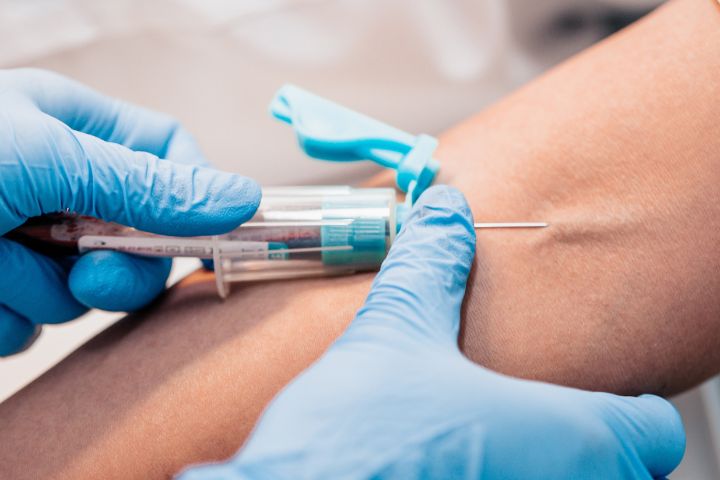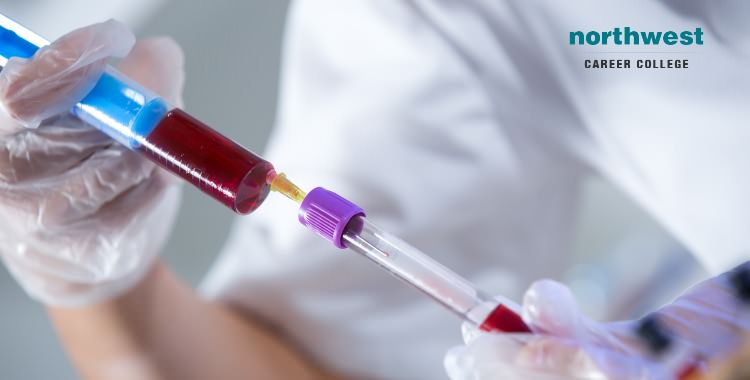5 Easy Facts About Northeast Medical Institute - New Haven Campus Phlebotomy Course & Cna Class Explained
Wiki Article
Northeast Medical Institute - New Haven Campus Phlebotomy Course & Cna Class Things To Know Before You Buy
Table of ContentsThe 4-Minute Rule for Northeast Medical Institute - New Haven Campus Phlebotomy Course & Cna ClassAll About Northeast Medical Institute - New Haven Campus Phlebotomy Course & Cna ClassAll About Northeast Medical Institute - New Haven Campus Phlebotomy Course & Cna ClassThe Ultimate Guide To Northeast Medical Institute - New Haven Campus Phlebotomy Course & Cna Class9 Easy Facts About Northeast Medical Institute - New Haven Campus Phlebotomy Course & Cna Class ShownThe 25-Second Trick For Northeast Medical Institute - New Haven Campus Phlebotomy Course & Cna Class
The use of such tools should be come with by other infection prevention and control techniques, and training in their usage. Not all safety tools apply to phlebotomy. Before choosing a safety-engineered tool, individuals should completely examine available tools to determine their ideal usage, compatibility with existing phlebotomy practices, and efficacy in securing staff and individuals (12, 33).For setups with low resources, cost is a motoring variable in purchase of safety-engineered gadgets. Where safety-engineered devices are not offered, skilled usage of a needle and syringe is appropriate.
labelling); transport conditions; interpretation of results for scientific administration. In an outpatient division or facility, give a committed phlebotomy workstation containing: a tidy surface area with 2 chairs (one for the phlebotomist and the various other for the individual); a hand laundry basin with soap, running water and paper towels; alcohol hand rub. In the blood-sampling area for an outpatient department or clinic, give a comfortable reclining sofa with an arm remainder.
The smart Trick of Northeast Medical Institute - New Haven Campus Phlebotomy Course & Cna Class That Nobody is Talking About
Ensure that the indications for blood tasting are clearly defined, either in a written method or in documented directions (e.g. in a lab type). Accumulate all the equipment required for the treatment and area it within secure and easy reach on a tray or cart, making sure that all the products are clearly noticeable.Where the individual is grown-up and conscious, adhere to the actions detailed listed below. Present yourself to the patient, and ask the client to mention their full name. Inspect that the lab kind matches the client's identity (i.e. match the person's information with the laboratory form, to ensure exact identification). Ask whether the patent has allergies, phobias or has ever before passed out during previous injections or blood draws.
Make the individual comfy in a supine position (ideally). Area a clean paper or towel under the client's arm. Go over the test to be carried out (see Annex F) and acquire verbal permission. The person has a right to refuse an examination at any moment before the blood tasting, so it is essential to ensure that the client has actually understood the treatment.
See This Report on Northeast Medical Institute - New Haven Campus Phlebotomy Course & Cna Class
Expand the client's arm and evaluate the antecubital fossa or lower arm. Find a capillary of an excellent dimension that is noticeable, straight and clear. The diagram in Section 2.3, shows usual settings of the vessels, however several variations are possible. The mean cubital vein exists in between muscles and is usually the most easy to penetrate.DO NOT insert the needle where capillaries are diverting, since this increases the opportunity of a haematoma. The blood vessel ought to be noticeable without using the tourniquet. Situating the vein will certainly help in establishing the right size of needle. Apply the tourniquet regarding 45 finger sizes over the venepuncture site and re-examine the vein.
Specimens from main lines bring a danger of contamination or erroneous lab examination outcomes. It is acceptable, however not perfect, to draw blood specimens when initial introducing an in-dwelling venous device, prior to connecting the cannula to the intravenous liquids.
The Definitive Guide for Northeast Medical Institute - New Haven Campus Phlebotomy Course & Cna Class
Failure to enable sufficient call time raises the risk of contamination. DO NOT touch the cleaned site; in specific, DO NOT place a finger over the blood vessel to guide the shaft of the these details subjected needle.Ask the person to create a fist so the veins are much more famous. Go into the capillary quickly at a 30 degree angle or much less, and proceed to present the needle along the blood vessel at the most convenient angle of entry - Phlebotomy Classes. Once adequate blood has actually been collected, launch the tourniquet prior to taking out the needle
All about Northeast Medical Institute - New Haven Campus Phlebotomy Course & Cna Class
Take out the needle delicately and use mild pressure to the site with a tidy gauze or dry cotton-wool sphere. Ask the patient to hold the gauze or cotton wool in position, with the arm expanded and increased. Ask the patient NOT to bend the arm, due to the fact that doing so creates a haematoma.
Our Northeast Medical Institute - New Haven Campus Phlebotomy Course & Cna Class Diaries
Do not push the syringe plunger since extra stress boosts the risk of haemolysis. Where possible, maintain televisions in a rack and move the shelf in the direction of you. Inject downwards into the proper coloured stopper. DO NOT eliminate the stopper because it will release the vacuum cleaner. If the example tube does not have a rubber stopper, infuse incredibly slowly into the tube as minimizing the stress and speed utilized to transfer the sampling decreases the threat of haemolysis.
Report this wiki page